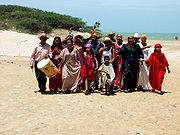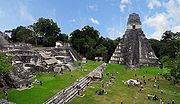 |
HONDURAS COPAN |
Honduras and its people are poor but
their history is rich. It is situated north of Nicaragua and has the Caribbean
Sea with the Gulf of Honduras on one side and the Pacific Ocean with the Gulf
of Fonseca on the other. On the Pacific coast, which is short, the country is
rugged and often inhospitable. On the Caribbean side the country is long,
low-lying. The climate is hot and steamy by the sea but cooler in the hills.
The population live mostly in the hills.
 |
| MAYA BUILDING |
By the western town of Copan are the
remains of Mayan city which was built around 500 AD. This ancient city has a
ruin of a Ball Court. It is believed that there were ceremonial games which
were similar to the Greek Olympics. An archaeological dig around the Main Court
stela (carved column) at the Mayan ruins of Copan is hoping to find more answers.
The Mayan Empire had its height between 200 AD and 900 AD. It still existed
till the Spaniards arrived in the 16th century.
 |
| FORT BUILT BY THE SPANISH TO KEEP THE ENGLISH PIRATES OUT |
Honduras won their independence in
1821. This followed a succession of unstable government. In 1969 the so called
'Soccer War' broke out against El Salvador. It followed an explosion of
violence at a football match between the two countries and went out of control.
The war, which followed, was about a border dispute and finished officially in
1980. After that Honduras became more stable but in the remote north-east the
Nicaraguan guerrillas used it in their war against the Sandinistas. The economy
was improved by Foreign aid via the World Bank.
In the past, Honduras was the biggest
exporter of bananas. Nowadays, it still exporting great amount of bananas but
they also export coffee, beef of large quantities, as well as pine, oak and
valuable mahogany. These woods still cover large amounts of the mountains.
In comparison to the neighbouring El
Salvador; Honduras is five times as big and has the same number of people as El
Salvador. The people are descendant from Indians and Spaniards but the ruling
class are pure Spanish.
Hondurans grow maize and beans for
their own consumption and live in houses made of mud and wattle. A few factories
making soap and cigarettes for their own use. They mainly trade with the US and
US companies own the plantation and the mining operation. The plantations on
the Caribbean coast have black workers who are descendant of African Slaves.
Most of the industry and government
were under foreign control. The top company of foreign-owned companies was
United Fruit Company and it was owned by the USA. 1954 the workers went on
strike and better conditions as well as less power of the Americans was
achieved. Nowadays, the foreign influence still exists but more power is now in
the hands of the Hondurans.



































